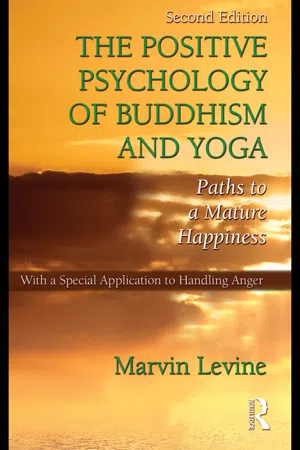1
King Ashoka’s Question
What Is Your Secret?
The following legend is told of King Ashoka, a powerful ruler in India at about 250 B.C.E.:
Later at the palace the king had an interview with the fellow, now dressed in the saffron robe of a Buddhist monk. Ashoka began by asking, “What is your secret?”
According to the legend, the monk replied by telling the king about the Buddha and Buddhist teachings—how these liberated him from all suffering. Ashoka then had the monk instruct him in these teachings. The king converted to Buddhism and made it the national religion. He himself changed from a despotic conqueror into a beneficent ruler.
2
Maturity and Serenity
Tibet, a country that was entirely Buddhist, was invaded in 1949 by the Chinese. They then began the forcible conversion of this land into a Marxist state. The Dalai Lama, the country’s spiritual leader, and many of the Buddhist monks escaped into exile. Since then, the Dalai Lama has traveled tirelessly trying to persuade the UN and various governments to pressure the Chinese into leaving Tibet. In a television interview a reporter asked the Dalai Lama: “Aren’t you ever angry at the Chinese?” The Dalai Lama replied: “They stole my country. Why should I let them steal my mind?”
During another interview about Tibet he said, “The enemy can be very important. The enemy teaches you patience.”
What do we mean by the term maturity, as in “He behaved in a mature way?” What do we mean by serenity? We associate these states with wisdom and peace of mind and generally regard them as ideals to be attained. Yet no one teaches us how to attain them. What produces mature behavior and serenity? Are there particular experiences we need? Are there techniques that, if faithfully applied, will produce them? How can one attain wisdom, peace, patience, and freedom from anger, even when one is in the midst of life’s struggles?
As the stories of the Dalai Lama suggest, these questions are taken very seriously in the East. Buddhism and Yoga have striven for thousands of years not only to answer such questions, but also to develop techniques for attaining this maturity, this in-the-world serenity.
We will begin our quest for this goal as they do in the East, at the opposite end: We will begin by understanding psychological suffering, i.e., the experience of suffering. We will be concerned with knowing how such suffering may be minimized and even eliminated. This apparent detour, according to the Eastern view, is really the start of the path to the goal. We will discuss suffering not merely theoretically but concretely, in terms of your and my pain, distress, frustration, etc. We will consider its various flare-ups and chronic forms. The chief starting questions are: What is the nature of this suffering? What causes it? What alleviates and puts an end to it?
In an effort to answer these questions, Buddhist and Hindu concepts of human nature, as they developed in India more than 2,000 years ago, are reviewed. In addition, these concepts will periodically be compared to relevant Western psychological ideas, for I clearly perceive an affinity between these Eastern views and the Western scientific view of human nature.
At the outset, let us acknowledge a basic similarity. The Western system of psychotherapy, with its various theoretical underpinnings, such as behaviorism or psychoanalysis, has as its fundamental concern the understanding and alleviating of psychological suffering. So also does Buddhism. The great questions of suffering—its nature, cause, and alleviation—have motivated into being the entire religion.
Given, then, two worldviews with the same concerns, we should not be surprised that they have some similarity or that they complement each other. As we review the Buddhist (and later the Yogic) system, I’ll pause periodically to present some relevant Western conception or method. Typically, these will be found at the end of the appropriate chapters.
FOR REFLECTION AND DISCUSSION
1. In one form of the legend described in Chapter 1, when Ashoka asks, “What is your secret?” the monk first replies, “What do you mean? What secret?” Do you find that an odd response? What does it imply?
2. One meaning of mature, of course, is “older.” But another meaning is a compliment, as when we say of a child, “He behaved in a mature way,” or of an adult, “That was a mature decision.” Using this second meaning, give a specific example of an adult person’s action in some situation where you might compliment him using the word mature. Now give a general definition of the word mature when used as a compliment.
3. Sometimes we use the word immature as a criticism (“You’re behaving in an immature way!”). What is the meaning of immature when used as a criticism?
3
The Story of Siddhartha
Like Jesus and Mohammed, the Buddha is a historical figure around whom a religion arose. The following story of his life is commonly told:
Before continuing with the tale, let us note the symbolic significance of Siddhartha’s transformation. One might think that renunciation of the world is appropriate only for people who have little and are wretched to start with. Siddhartha, by his action, tells us that is not so. Even princely pleasures cannot compensate for the pain caused by ignorance of life. If we lack understanding, the richest, most luxurious life is not good enough.
We also can make here a comparison between West and East. Psychotherapy in the West is concerned with specific types of suffering: depression, phobias, obsessions, etc. The initial impulse to Buddhism begins with the more general framework of suffering: that derived from illness, aging, and the constant threat of death. As will be seen when we consider the teachings of the mature Buddha, the concept of suffering will be enlarged to cover not only this general framework, but also the clinician’s concerns as well as other kinds of pain.
